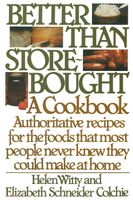Prue Leith's latest book is now on ckbk. Get 25% off ckbk Membership
Notes on Dairying
By Helen Witty and Elizabeth Schneider
Published 1979
If any of the following recipes seem equivocal about the time required for a certain step, such as the formation of cheese curd, there are several reasons why we can’t be precise. First of all, milk is a most unpredictable substance. No two batches are identical, chemically or bacteriologically. In addition, the weather and the kinds of bacilli in the environment have always influenced the dairymaid’s or dairyman’s efforts. Other variables to contend with include pasteurization, packaging, shipping, and the holding of milk and cream for sometimes unknown periods in supermarkets, all of which affect your dairying results. The relative freshness of the raw ingredients will affect the maturing time as well as the flavor of yogurt, fresh cheese, or sour cream—indeed, of all fermented dairy products. Use the freshest possible buttermilk, yogurt, or sour cream when any of these are called for as “starters”; their beneficial bacilli grow weak as age creeps up, and success can’t be guaranteed if you use a starter that is too old.
Become a Premium Member to access this page
Unlimited, ad-free access to hundreds of the world’s best cookbooks
Over 150,000 recipes with thousands more added every month
Recommended by leading chefs and food writers
Powerful search filters to match your tastes
Create collections and add reviews or private notes to any recipe
Swipe to browse each cookbook from cover-to-cover
Manage your subscription via the My Membership page
Part of
Advertisement
Related Recipes
-
-
-
-
Related Reference
-
-
-
-
Advertisement




